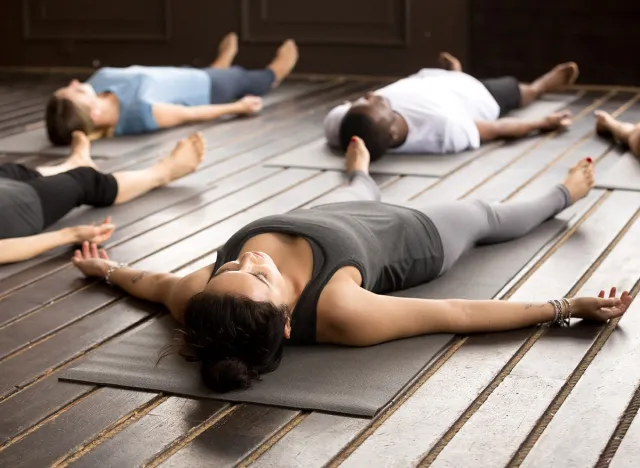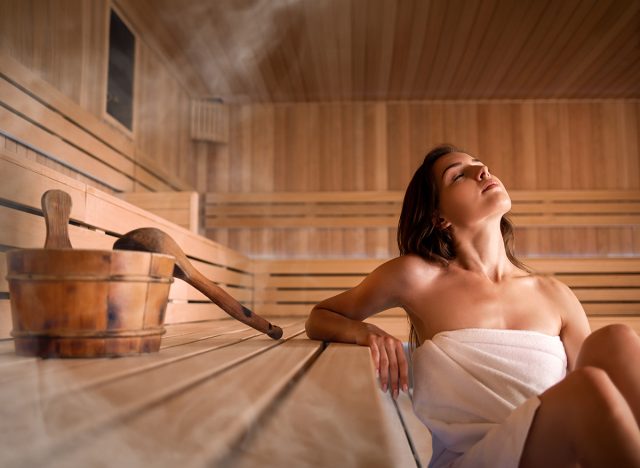6 Effective Ways to Get Fit if You Have Chronic Health Issues

Anyone who has ever suffered from chronic health issues understands just how difficult exercise can be when you aren't feeling like yourself. However, it is just as important – if not more so – to stay moving while trying to recover. What are the best ways to get fit if you suffer from chronic health conditions, ranging from long covid to autoimmune disorders? The Body Network has the answers.
Start By Taking a Deep Breath

Luke Jones, movement Coach and Content Creator at Hero Movement, is currently in the process of recovering from long-covid and other chronic pain conditions. He tells The Body Network that starting small was key in his return to movement. "I had to strip things right back to gentle breathing exercises and slow, easy mobility exercises lying in bed or on the ground," he says. "Initially, this would be for no more than a few minutes or so at a time. Over time, as my body began to heal and trust that exercise was in fact safe, I was gradually able to increase the duration and intensity of my training. Still, I had to practice tuning into my body to determine when it was best to push things, and when it was time to rest, rather than assuming I could expand my capacity in a linear fashion."
Related: Real Housewives Husband and Plastic Surgeon Quit Ozempic Because of This One Unexpected Side Effect
Be Patient, and Continue Rebuilding

Jones also stresses the importance of being patient. "As I slowly began to expand my tolerance for movement, there were many times when my body fought back and I experienced an increase in physical and mental symptoms. Rather than beating myself and turning to despair, I endeavored to keep the bigger picture in mind and practice self-compassion and patience," he says. "Pause, reset, rest and rebuild. This wasn't something I was always able to get right, and is still an ongoing process!"
Restorative Exercise and Destressing Activities

"I was only really able to start expanding my ability to move when I balanced the strain of living with chronic symptoms with tools to support my recovery," says Jones. These included breathwork, yoga nidra, naps, therapy, journalling, brain retraining, and plenty of rest days. "Without the more 'yin' side of things and the emotional healing work, my nervous system would not have had the capacity to cope with me expanding my comfort zone again through exercise," he says.
Related: Woman Wows With Her Flat Stomach After Losing 30 Pounds by Walking
Regular Sauna Sessions

Lyndsay Morris, a long covid survivor and founder of Generation Wellness, a mindful education consulting company that offers online courses, memberships, and virtual events, explains that adding regular sauna sessions into her routine were a game changer. "The warmth penetrated deep into my muscles, easing aches and promoting circulation," she says, adding that sweating was great for detoxification. It was also healing – both mentally and physically.
Walking

As she started noticing improvements in her overall wellbeing, she felt well enough to move her body. "Encouraged by these changes, I cautiously reintroduced exercise into my routine, starting with gentle activities and gradually progressing," she says. She celebrated each small milestone as a victory, as her short walks got longer, and soon after, she was able to do more intense workouts.
Related: I'm a Fitness Coach and Here are 5 Secrets to Getting in Your Best Shape Ever
Cold Plunges

Cold therapy is another healing ritual that helped Morris. "This has been such an amazing piece of the puzzle for reducing inflammation to allow for exercise," she says. It also helped improve her circulation, helped with muscle recovery, boosted her immunity, increased her energy levels, and helped her with stress.
💪🔥Body Booster: If you are dealing with chronic health issues, don't overwhelm yourself. Start your health journey by taking small steps, like going on a short walk or doing some stretches, and try to build up over time.




